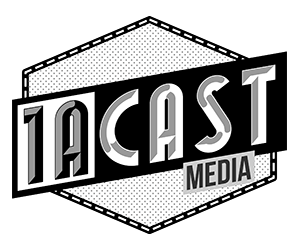 As the nation remembers the Japanese Empire attack on Pearl Harbor, Dec. 7, 1941, “a day that will live in infamy,” as President Franklin D. Roosevelt memorably called it in seeking Congress’ declaration of war on Japan the next day, S. J. Hemker, now 93, a U.S. Navy Veteran, American Legionnaire, and Pearl Harbor survivor, remembers it in a much more up close and personal way:
As the nation remembers the Japanese Empire attack on Pearl Harbor, Dec. 7, 1941, “a day that will live in infamy,” as President Franklin D. Roosevelt memorably called it in seeking Congress’ declaration of war on Japan the next day, S. J. Hemker, now 93, a U.S. Navy Veteran, American Legionnaire, and Pearl Harbor survivor, remembers it in a much more up close and personal way:
“Ordinarily, we would have been at sea, we were at Pearl Harbor because we had to repair an engine that had been sabotaged at the shipyard back in California. I was up on the fantail of our ship, the USS New Orleans, a heavy cruiser, with the Chief Master at Arms. The Quartermaster was there, getting ready to raise the flag,” Hemker recalls.
“It was 7:55 a.m. when we saw the Japanese planes. They were flying so low I could see the pilots faces in the cockpit. They were grinning at us as they went down toward Battle Ship Row. Grinning at me and the Chief. They were so close, you could have thrown something at them and hit them. A potato, maybe. They were that close. Just skimming the top of the water. Torpedo planes. The pilots grinning at us,” Hemker reluctantly, but vividly recalls.
“ The loudspeakers blared: ‘Man your battle stations – the Japs are attacking.’ All hell broke loose. It was terrible, horrible, …,” he says, pausing in his remembrance.
“I spent the next eight hours down in the magazine loading for our five-inch anti-aircraft guns. We fired everything. If we had been hit, that would have been it for us in the magazine. We would have been blown up. We had a big crane over the top of our ship. I think that’s what saved us.” he states matter-of-factly as to his own circumstance., then somberly relates:
“The Arizona capsized. Thirteen hundred men went down with her. Half the guys I was with in boot camp died on the Arizona. That’s where the Memorial is today. They say that oil still leaks out every day. Those guys…they’re still down there,” Hemker says quietly, his voice trailing off, as if physically turning away from a memory, and reality, which is still too painful to talk about.
Getting Hemker to talk about it at all is no easy task. Like many of his fellow World War II veterans, he still doesn’t talk about his war experiences, never expects any thanks or gratitude, and never, ever boasts about it, despite the fact that after Pearl Harbor he served America in battles and combat zones for the duration of WWII, in the Korean War, and in Vietnam.
“It’s all in the past. Its something I lived through, and I don’t talk about it much. I guess because it lasted so long, and it was so horrible—a lot of real good people got killed. I just don’t talk about it,” Hemker attempts to explain to someone who wasn’t there. “You’re learning more than most; I just don’t talk about it. I wouldn’t be talking to you except you say it’s important for the kids to know.”
 S.J. Hemker is a member of a generation whose childhood was of the Depression, and whose early adulthood was of World War II, a generation which preserved American freedom and exemplified American values, and has rightly been called the “Greatest Generation.” A generation about whom “it’s important for the kids to know.”
S.J. Hemker is a member of a generation whose childhood was of the Depression, and whose early adulthood was of World War II, a generation which preserved American freedom and exemplified American values, and has rightly been called the “Greatest Generation.” A generation about whom “it’s important for the kids to know.”Hemker was born in 1919, and had a small-town, Midwestern upbringing by hardworking parents in Union, Missouri. He was ten when the Depression hit. “I went to school during the day and worked at the bakery at night. They didn’t pay me; but let me take home the day old bread and pastries. It helped the family. That’s how I learned the baking trade.”
One day shortly after graduating from school in 1937, “I went downtown and there was this Navy recruiter there. He had a Navy car. He talked about ‘seeing the word,’ and ‘three square meals a day.’ That sounded good to me. I was tired of cornbread and beans. I signed up,” Hemker recalls.
After “Boot Camp” at Great Lakes Naval Station in Illinois, Hemker was temporarily assigned to the Base, then to the USS New Orleans out of San Diego. “Many of my boot camp class were assigned to the Arizona; if I hadn’t been given temporary duty at the Naval Station, I probably would have died with them at Pearl Harbor.”
Hemker received a raise from “$17 to $21 a month when I was assigned to the New Orleans.” He spent six months or so on the “deck force,” then “about 18 months in the engine room,” and then one day told the ship’s Commissary Chief: “Hell, I can make a loaf of bread better than you can.” Miffed, the Chief dared him, and Hemker proved his boast. Six months later when there was an opening, the Chief made Hemker the ship’s baker. He then “learned everything –cooking, baking, butchering everything.”
Hemker’s 4-year hitch was just about up, and he thought he would leave the Navy, when Pearl Harbor hit. “That changed everything—we were extended for the duration.”
The duration included Hemker’s participation in what are now historic sea battles, including the Battle of Coral Sea, and Midway “…the turning point of the war, when we sank their carriers,” Hemker says.
 |
| USS NEW ORLEANS SINKING |
The New Orleans had a crew “of about 500. It was small enough that you knew everybody on board by their first names, everybody knew everybody else,” Hemker relates.
One of the battles took place on “November 30, 1942. It was around midnight. The Japanese torpedoed us. It was a triple explosion—the torpedo; then the ammunition magazine for the eight inch guns, then the aviation gasoline. It blew off 192 feet of the bow,” Hemker relates.
“Two hundred and three of our crew were killed. 203…almost half our crew,” Hemker says, his voice dropping to a whisper. “I don’t like to talk about it.”
Hempker survived that battle, and many more. In 1945, he was on the New Orleans, “…and we could see the Japanese boarding the Missouri to sign the surrender. I was very, very glad it was over.”
Hemker by then had a number of years in the Navy, so stayed in, and found himself at war again in Korea, and in Vietnam. He served all those battles without major injury, and retired.
His three sons from a first marriage, all served the nation: Robert, who retired from a Navy career like his dad; William, who served in the Army in Vietnam; and Earl, who served in the Coast Guard in Vietnam.
Hemker remarried, and he and his Hazel were married for 32 years before she died seventeen years ago. For the last 13 years of their marriage, Hazel was bedridden, and could do nothing for herself. Hemker did everything for her, with love, and without complaint. “She would have done the same for me,” Hemker says. “We were in love.”
Hemker, looking forward to his 94th birthday on Jan. 10, 2012, is still roguishly handsome, has a sharp sense of humor, and is universally admired by his comrades in the American Legion, in which he continues to serve America. “I’m not able to do what I used to do, but I do what I can,” Hemker says.
On Patriot Day, 9-11-2010, Hemker was honored by being named Grand Marshall of the Annual Stage Coach Days Parade in Banning, California, where he now lives in retirement. “I was glad to do it,. ” Hemker says, “serving with all my comrade veterans, from all the military services on Patriot Day. Even more people died on 9-11 than died at Pearl Harbor. We Americans should never forget. If we forget our past and those who died, we won’t have a free country in the future.”
As Pearl Harbor Day is again observed, Hemker notes: “I don’t think people remember it, and what it means, the way they used to. That’s too bad. A lot of us can’t forget. An awful lot of really good people died to keep America free. They shouldn’t be forgotten.”
[Rees Lloyd, a civil rights attorney and American Legion activist, is a member of the Victoria Taft Blogforce.]



